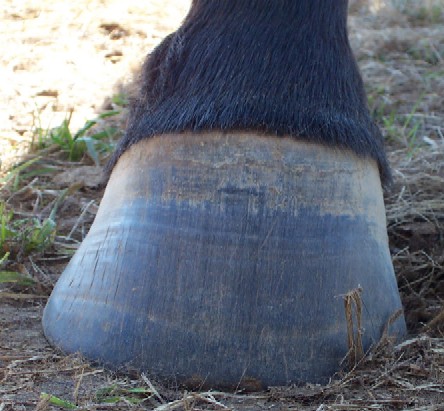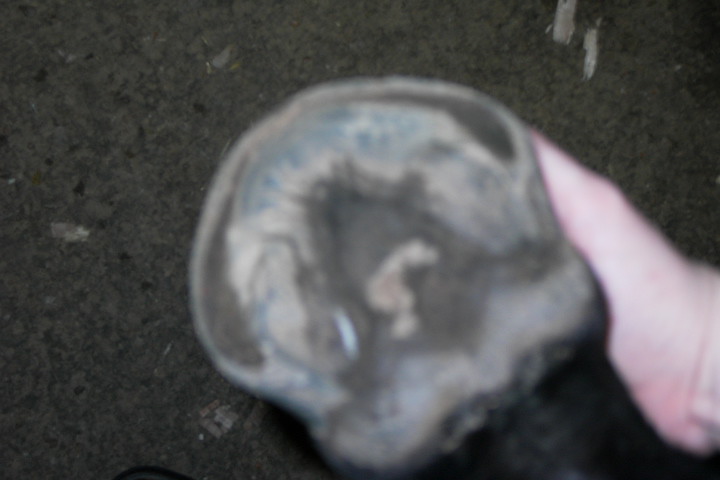Hi Katelyn…
It would be best if you can post some pics, but I’ll answer your questions as best I can without. Please include a sole shot even though he is in pads.
First comment I would make is that from my experience, a bad trim doesn’t generally founder a horse…there is only one type trim that I have heard of that commonly founders horses and I’m sure your farrier was not applying that trim. I think that you need to get bloodwork and look for underlying problems (undiscovered disease, liver problems, insulin resistance, and/or thyroid problems). Have you done any dietary changes since the founder? What other things have you changed in his management?
Second, treating rotation is one thing…treating a sinker is another. The problem is if the attachment separtated high enough up the hoof wall…near the coronary…then gaining a new, sound attachment that high up is a real bear! The new laminae will want to “stretch” itself to reach the dropped coffin bone. And, it won’t “unstretch”…the coffin bone will slowly have to be reattached by shorter and shorter laminae each new growth. That could take several years. I have seen improvement in my own mare in 2 years, but we still have a long way to go. I have even heard of good reattachment in 2-3 years…but, that was told to me, I didn’t see it.
Often the problem with sinkers is that they keep suffering small bouts of laminitis. These bouts often go undetected, especially if the trim is correct. But, each bout weakens the laminae and lets the foot sink a little lower
each time. Generally, these horses have metabolic disorders that are the underlying cause of the laminitis. Sometimes these metabolic issues are never discovered or resolved.
The final thing is, if he is sound, and you see continuous improvement in the way his feet look…judge the new growth at the top of the foot, not the old growth (can’t do anything about that)…then you are probably progressing as well as can be expected. Is his white line getting tighter each time? This is an excellent way to judge what is happening inside. As the coffin bone resumes it orifinal position, the typical foundered foot stretched white line should start shrinking. I don’t think that 6 months is enough time to see if this is working (in this particular case)…and I would suggest that because he is “sound and happy”, things are working. Also, a size 3 or 4 is a good size foot, so he probably has good form, just bad looking old growth on the outside. Keep checking the growth nearest the coronary and see if it is smoother and the horn tubules straighter. If not, then either the horse has chronic laminitis that you are not detecting, or the method is not working.
Hope this helps…waiting for your pics 
Proud member of the * Hoof Fetish Clique *



 .
.
